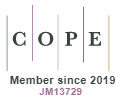Enriching Place-Experience Through Materiality: An exploration into architecturally-designed ceramics to facilitate engagement and a sense of place in our cities
DOI:
https://doi.org/10.15415/cs.2014.21003Keywords:
Engagement, sense of place, explorationAbstract
The paper highlights the importance of designing public realm materiality to enhance sensual involvement and the experience of place. Exploring the neurological mechanisms for perception and engagement creates a theoretical basis upon which the momentary relationship experienced between a passer-by and the materiality can be analysed. The issue is further examined using two case studies. It is contended that materiality can facilitate a heightened sensual relationship with place by expressing qualities of legibility, compatibility and unfamiliarity, enabing a haptic relationship (more impacting than that of vision) to develop. The active sensing of the environment as well as the place being legible are both vital for engagement, meaning that the holistic processes and material qualities that facilitate this condition are vital to urban design. The design of everyday surfaces is suggested to be equally important to art and sculpture, due to its effect on the inhabitants and its role in placemaking and distant engagement. The role of materiality in the creation and vibrancy of a place is crucial and easily achieved, although often undervalued.
Engagement: Feeling connected; either a sensual connection with surrounding environment; or a cognitively one (with thoughts), reducing bodily engagement.
Perception: The cognitive processing of external stimuli once sensed by the body (involves legibility and compatibility).
Experience: Derived from perception, the brain’s representation of external reality, depends on the body’s level of sensory stimulation, introducing the idea of an engagement threshold and the role of materiality in engaging attention.
Dissolution: An intimate connection to the place, enabled by some phenomena, suggesting the possibility for materials to heighten a sense of place.
Continuous Derive: A psycho-geographical term, describing unplanned everyday experiences through sensual engagement with the urban fabric, enabling a sense of place. The paper aims to achieve this state through the careful design of the materiality of the urban realm.
Downloads
References
BALLANTyNE, A. (2007) ‘Deleuze and Guattari for architects’. Routledge.
BARTLETT, P. F. (2005) ‘Urban Place: Reconnecting with the Natural World’. The MIT Press.
BERMANN, M., JONIDES, J., KAPLAN, S. (2008) ‘The Cognitive beneits of Interacting with Nature’, Psychological Science 19, pp. 1207-1212. [Online] Available from http://dx.doi.org/10.1111/j.1467-9280.2008.02225.x. [Accessed 23 March 2014]
BLAKEMORE, C. (1977) ‘Mechanics of the Mind’. Cambridge University Press.
CARUSO, A. (2009) ‘The Feeling of Things’. Ediciones Poligrafa.
COVERLEY, M. (2010) ‘Psychogeography’. Oldcastle Books.
DAY, C. (2003) ‘Places of the Soul’. Routledge. 2nd edition.
DAY, C. (2002) ‘Spirit and Place’. Routledge. 1st edition.
DERNIE, D. Material Imagination. Stable URL: http://www.westminster.ac.uk/about-us/ourpeople/directory/dernie-david
EBERHARD, J. P. (2008) ‘Brain Landscape: The Coexistence of Neuroscience and Architecture’. Oxford University Press.
HALLIWELL, E. Mindfulness Report, British Mental Health Foundation. Stable URL: http://www.livingmindfully.co.uk/downloads/Mindfulness_Report.pdf
HEATHERWICK STUDIOS (2012) Designing the Extraordinary. Victoria and Albert Museum, London.
HEGGER, M. (2006) ‘Basic Materials’. Birkhäuser Architecture.
HEIDEGGER, M. (1975) ‘Poetry, Language, Thought’. Harper Perennial.
HOLL, S., PALLASMAA, J., PEREZ-GOMEZ, A. (2007) ‘Questions of Perception: Phenomenology of Architecture’. William K Stout Publishers.
Downloads
Published
Issue
Section
License
Articles in the Journal of Creative Space (Creat. Sp.) by Chitkara University Publications are Open Access articles that are published with licensed under a Creative Commons Attribution- CC-BY 4.0 International License. Based on a work at https://cs.chitkara.edu.in. This license permits one to use, remix, tweak and reproduction in any medium, even commercially provided one give credit for the original creation.
View Legal Code of the above-mentioned license, https://creativecommons.org/licenses/by/4.0/legalcode
View Licence Deed here https://creativecommons.org/licenses/by/4.0/
 |
Journal of Creative Space by Chitkara University Publications is licensed under a Creative Commons Attribution 4.0 International License. Based on a work at https://cs.chitkara.edu.in/ |







